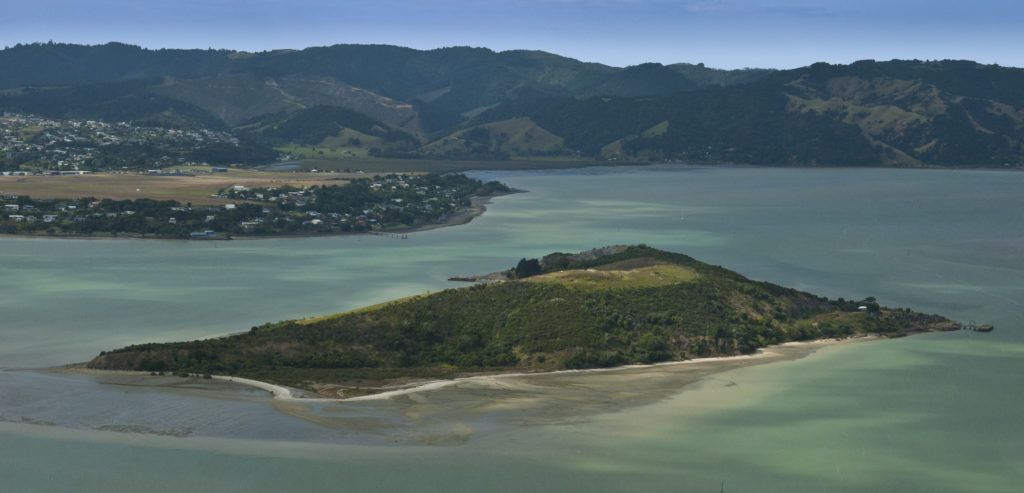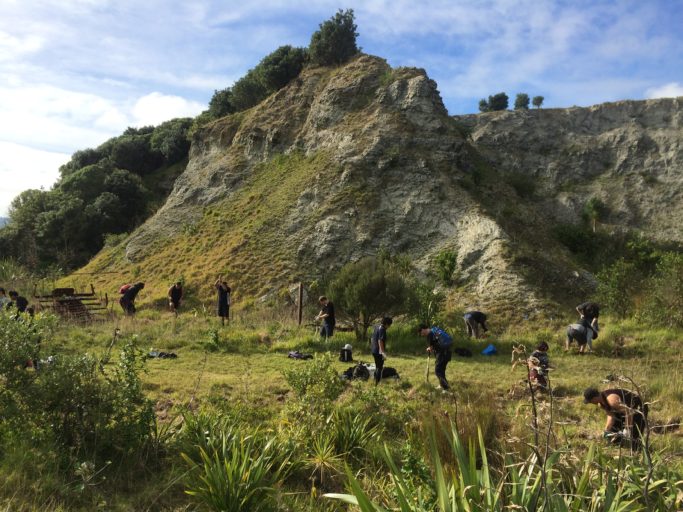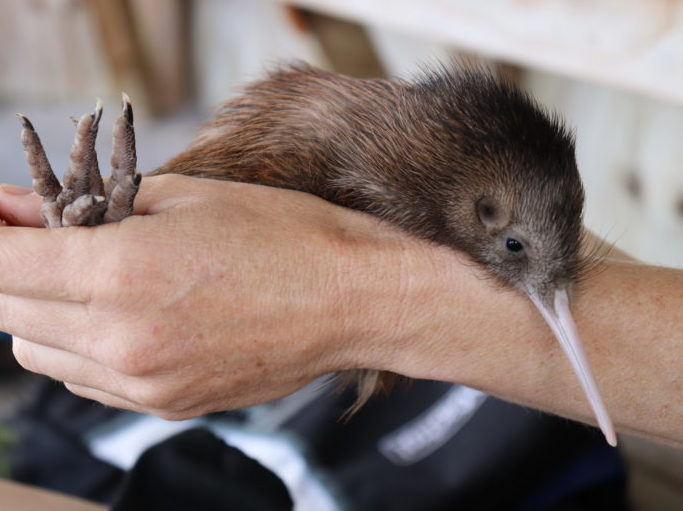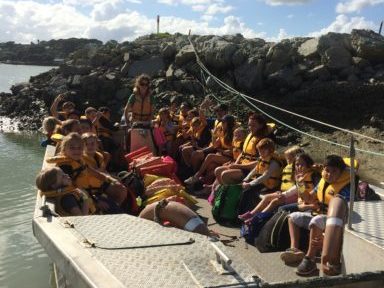Matakohe – Limestone Island in Whangarei Harbour, was once the site of Matakohe pa, with extensive kumara gardens. Later ‘Limestone Island’ was home to a cement works, one of the earliest industrial sites in Whangarei and founded in 1856. Then, after the cement works was abandoned, limestone was quarried on the island until 1963.

The name Matakohe was given to the island by local Maori in reference to its appearance as a headland when viewed from down the harbour- “Mata”- that was cloaked in kohekohe trees, hence “kohe”. But industry and human habitation took its usual toll. Around 200 people were living on the island at one time and, 30 years ago when the Friends of Matakohe Limestone Island first began to nurture the island, it’s kohekohe trees and forested areas were gone.
“Only a couple of dozen trees were left,” says Pam Stevens, current Chair of the ‘Friends’, a community committee which manages the island for the Whangarei District Council.

What a difference 30 years makes! Now 170,000 native plants have been planted on the island, introduced predators (other than mice) are gone and the reforested areas have grown to the point where they’re self-sustaining. Volunteers still need to keep introduced weeds down, but the native plants are maturing, seeding and germinating. That’s probably just as well.
“We can’t do any more planting on the island,” Pam explains. “Both the local nurseries where we sourced plants now have plague skinks. The island is an open sanctuary and District Council reserve,” she adds, “And we’re trying to keep plague skinks and Argentinian ants off it.”
The island is just a boat ride from Whangarei city and a short paddle from the suburb of Onerahi – meaning its also just a short swim away for stoats, weasels or Norway rats, which are good swimmers.
“The island is very fortified,” Pam says. “Predators were eradicated long ago so now it’s a matter of doing our ‘knitting’. We have 35 DOC 200 traps and 30 rat traps over the island and are planning to put out some DOC 250s. The traps are checked every week by our ranger. A couple of little islands are trapped as well.”
“Stoats, weasels and rats do occasionally swim across, but we have a buffer zone around the island and on the mainland where it faces the island. I’m going to a meeting today about making the whole peninsula of Onerahi pest free,” she adds.
The Friends of Matakohe Limestone Island employ a full-time ranger who lives on the island for a 3-year period.
“Local businesses are very supportive, with Golden Bay Cement, Rentokil and the District Council contributing to the ranger’s wages,” says Pam. “All of our rangers have gone on to do wonderful things in conservation after their 3-years on the island.”
The current ranger is Darren Gash who is part-way through his first year on the island.

‘Friends’ volunteers also work regularly on the island.
“We have amazing volunteers,” says Pam. “It’s incredible what they do – weeding, breaking up rocks for the jetty, cutting back flax! We’ve just had a ‘Mouse-Bust’ where 800 tunnels were rebaited – one every 25 metres. We try to keep mouse numbers less than about 5%. They were down to nearly zero but have crept up.”
Not all the island is covered in forest and the areas of grass that remain make great mouse habitat.
“Quite a proportion if the island can’t be replanted as it’s a heritage site,” Pam explains. “There were extensive kumara gardens and it was a significant, strategic Pa site and an early industrial site. The grassland is where the pipits and fernbirds live and there are some kiwi tunnels too.”
The fernbirds are self-reintroduced, but most of the kiwi had a helping hand to get there and are temporary residents.
“Matakohe is the only kiwi creche island in Northland that is part of ‘Operation Nest Egg’,” says Pam. “We have North Island Brown Kiwi – about 60 at any one time, along with 4 adult birds that are resident on the island. We have them from when they’re 2-3 weeks old until they weigh 1200 grams and are big enough to come off the island and go back to the mainland. Four came off the island last week – one of which was actually island born.”
The island-born chick didn’t have a name, so was gifted a name when she left the island. In fact, she was gifted 2 names: a te reo name – Pikiake – and a Māori sign language name meaning ‘Go Forth’. Fred Tito of the Te Parawhau hapū offered a whakawātea to Pikiake and three fellow kiwis – Sarah, Prudence and Kiaora – to send them on a safe journey from Matakohe and they have now been released at Tutukaka.

While most kiwi are only temporary residents on Matakohe, an increasing number of other birds are both visiting and coming to the island long-term.
“The Oi – grey-faced petrel – was reintroduced in 2005,” says Pam. “The birds came from the Hen and Chicks Islands in Northland, near the Poor Knights and there’s been some success. We have one chick at the moment, but it takes 7-10 years before the adult birds come back to breed.”
There are currently 46 species of birds living on the island, including exotic species which have discovered the safety of Matakohe as a night-time roost.
“About 25,000 birds fly over to roost here every night,” says Pam. “They also bring Taiwanese cherries, pampas grass, moth plant, privet and phoenix palm seeds!”
“We’ve also had 8 different species of geckos and skinks translocated to Matakohe and have lots of weta houses. Children on school trips love looking in the wētā houses!”
Stick insects and tree wētā have been reintroduced and are doing well over the island but Pam would love to see an even bigger wētā living there.
“We would love to have Wētāpunga (giant wētā),” she says. “But we’d need to get mouse numbers very low first!”

